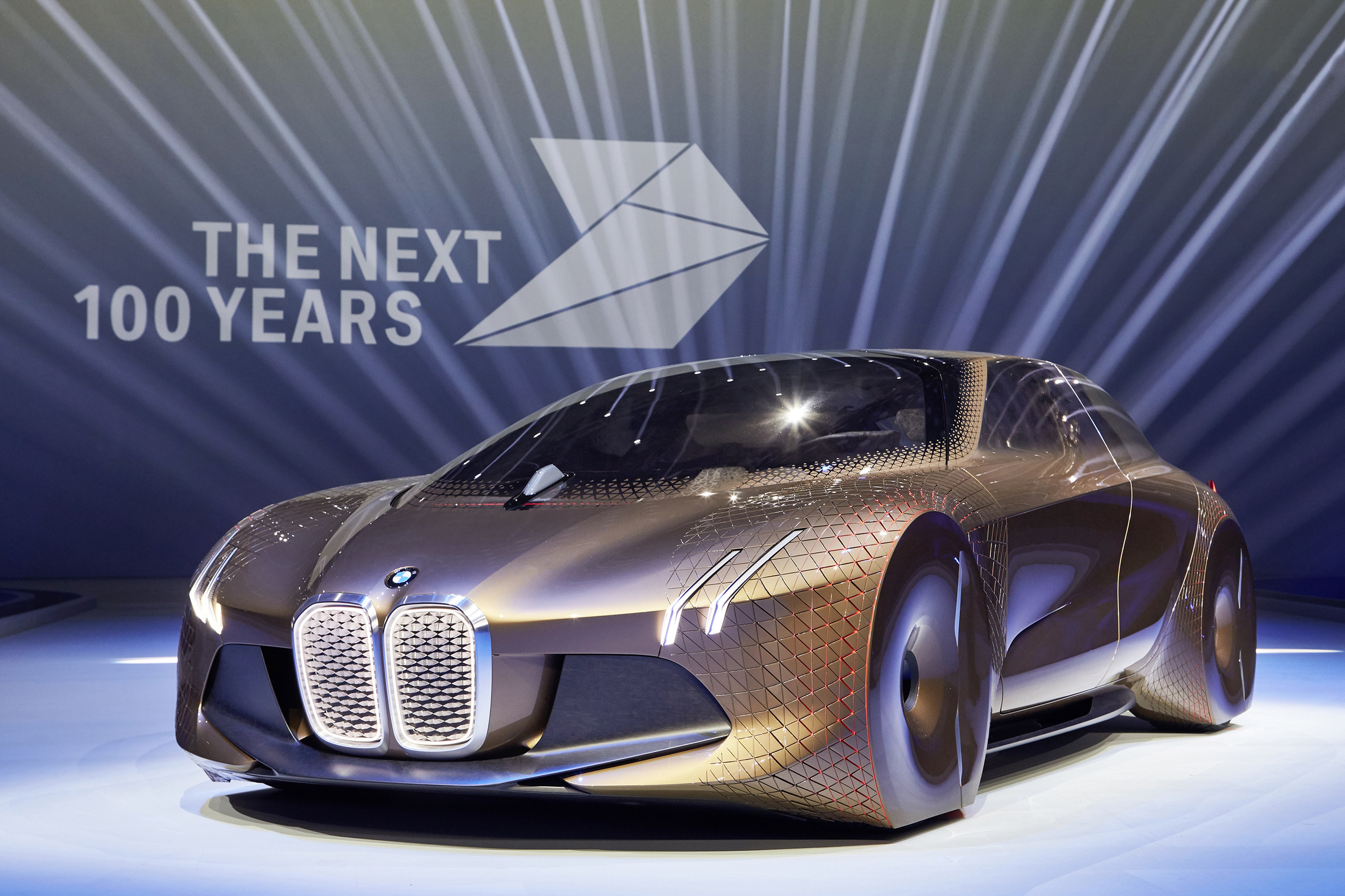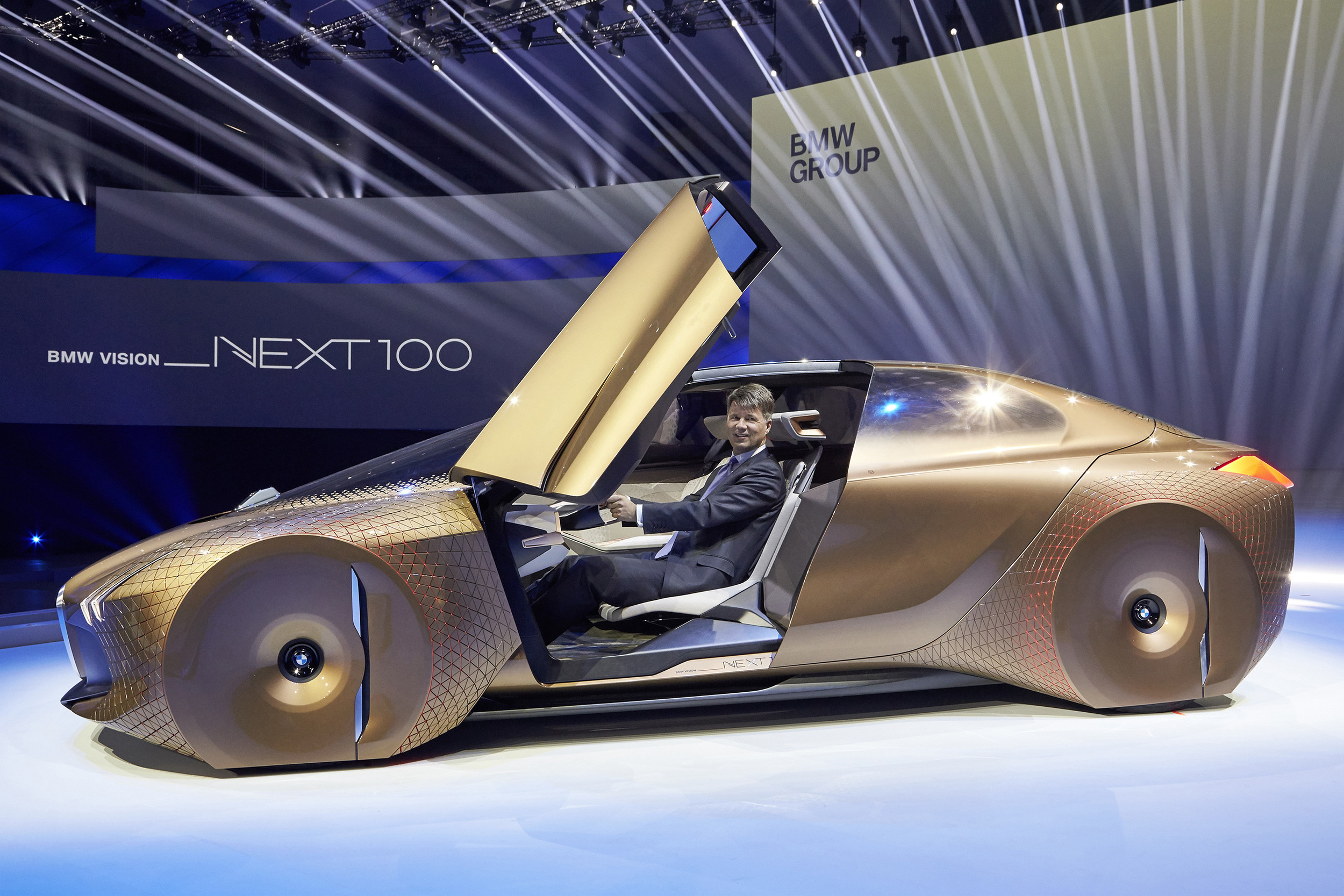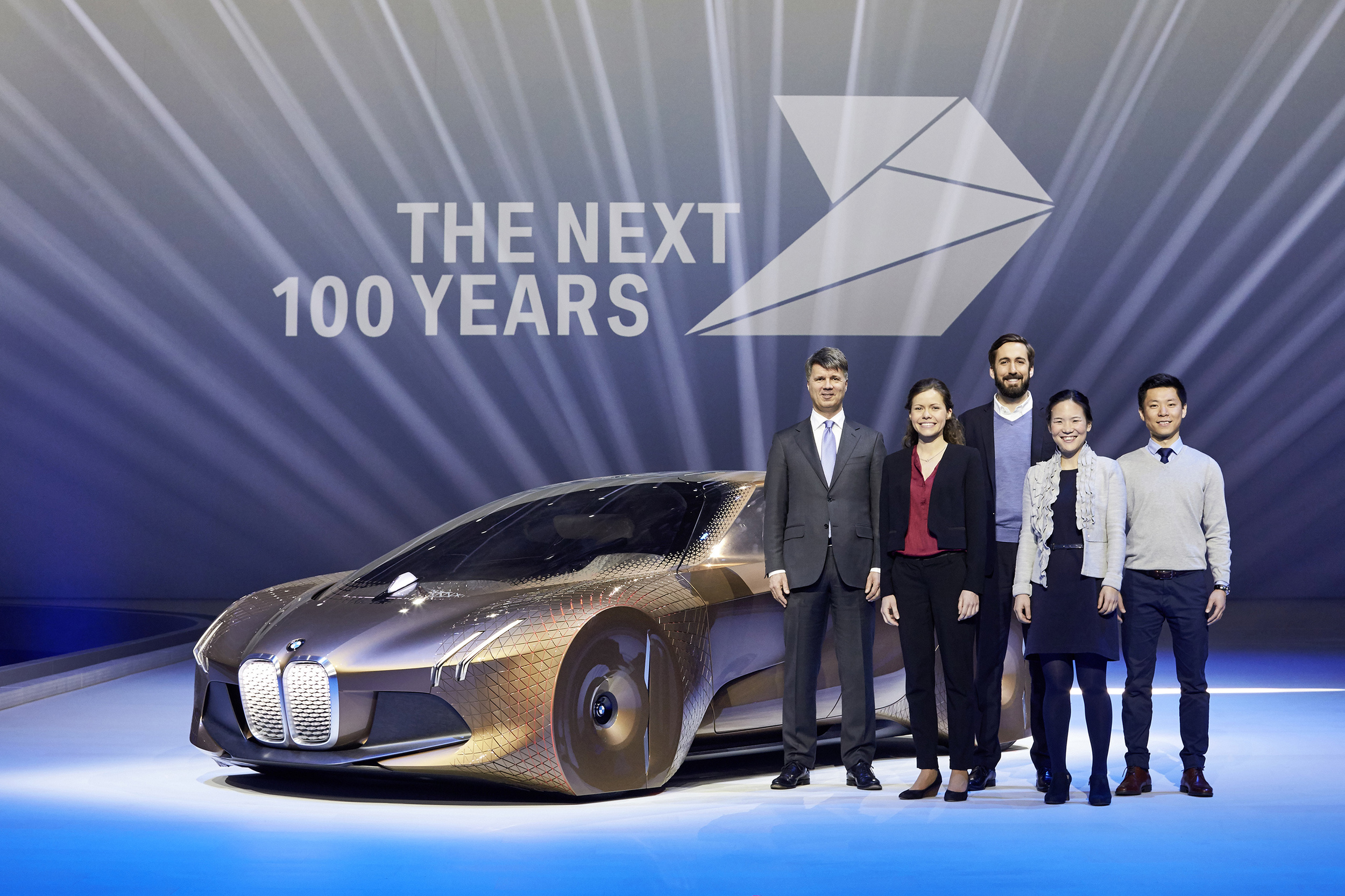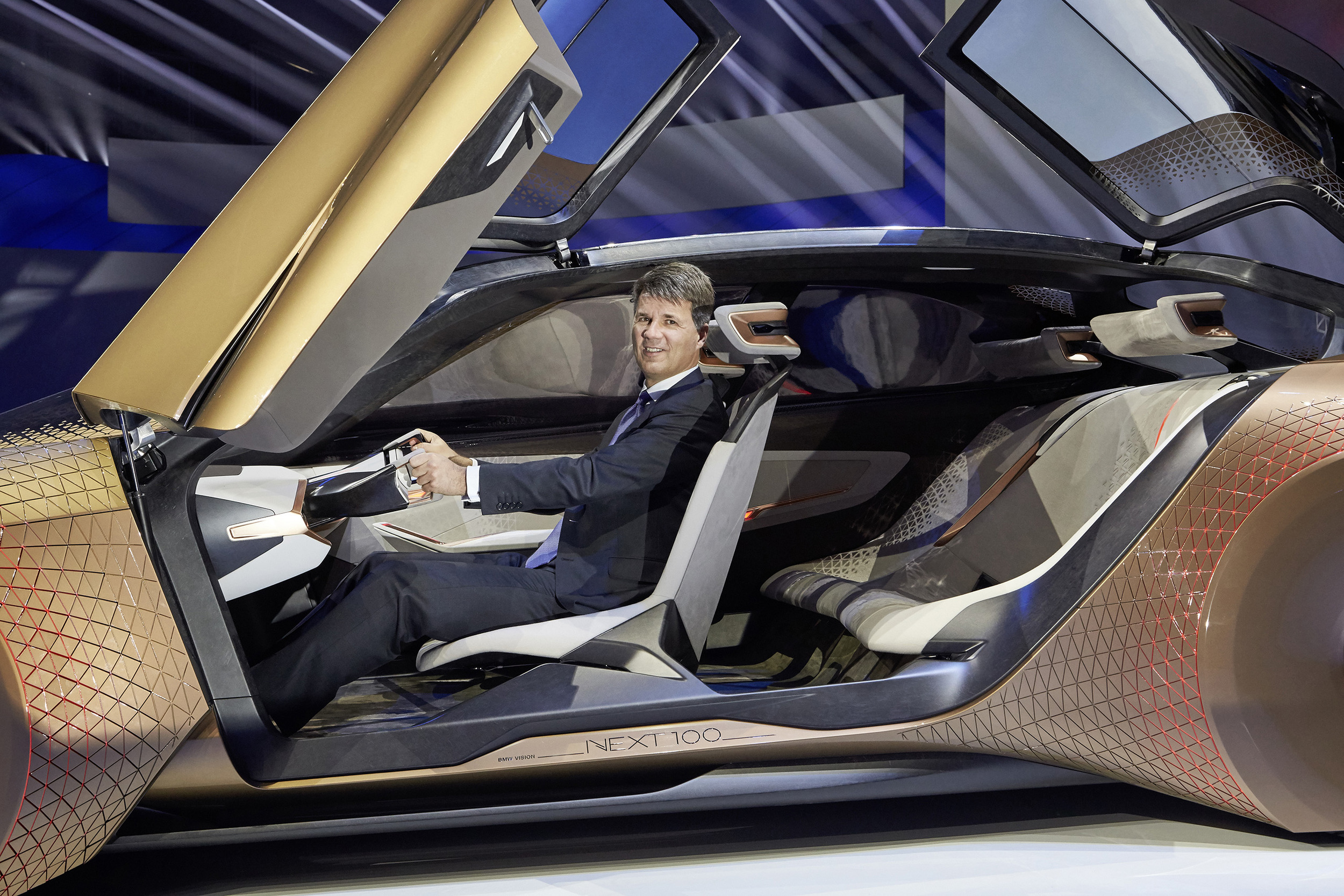





BMW has revealed a new futuristic concept - the Vision Next 100.
The autonomous concept marks 100 years since the German car giant was founded, and BMW says in the not-too-distant future, most vehicles will probably be completely self-driving – ‘people will get around in robots on wheels’. The main objective in creating the Vision Next 100 was to produce an anonymous vehicle, but one that is highly personalised and fully geared to meet the driver’s every need. For the BMW Vision Next 100, the design team specifically took into account all the trends and technological developments that will be most relevant in the decades ahead.
Adrian van Hooydonk, Head of BMW Group Design: “If, as a designer, you are able to imagine something, there’s a good chance it could one day become reality. So our objective with the BMW Vision Next 100 was to develop a future scenario that people would engage with. Technology is going to make significant advances, opening up fantastic new possibilities that will allow us to offer the driver even more assistance for an even more intense driving experience. My personal view is that technology should be as intuitive as possible to operate and experience so that future interactions between human, machine and surroundings become seamless. The BMW Vision Next 100 shows how we intend to shape this future.”
BMW says that four main proposals underpin the concept; 'A genuine BMW is always driver-focused, Artificial intelligence and intuitive technology becomes one, New materials open up breathtaking opportunities and Mobility will remain an emotional experience'.
The design of the interior permits various modes of operation: Boost mode, in which the driver is at the controls, and Ease mode, in which the driver can sit back and let the vehicle take over. In Ease, the vehicle becomes a place of retreat with plenty of space, soft lighting and a comfortable atmosphere. In Boost, the driver takes over and benefits from the ‘subtle and intuitive’ support offered by the vehicle. All the time, the vehicle is learning more and more about the person at the wheel, thanks to its sensory and digital intelligence, which BMW calls the Companion. The Companion progressively learns to offer the right kind of support to transform the driver into the Ultimate Driver.
An important element of the Vision Vehicle is another innovation known as Alive Geometry - the likes of which have never before been seen in a car. It consists of a kind of three-dimensional sculpture that works both inside and outside the vehicle. Consisting of almost 800 moving triangles which are set into the instrument panel and into certain areas of the side panels. They work in three dimensions, communicating very directly with the driver through their movements, which are more like gestures than two-dimensional depictions on a display. Even the slightest peripheral movement is perceptible to the driver. In combination with the Head-Up display, Alive Geometry 'fuses the analogue with the digital'.
The Vision Vehicle suggests there will at some point be no more displays at all, instead the entire windscreen will serve as a giant display, directly in front of the driver. In the future the digital and physical worlds will merge considerably, as is also expressed through Alive Geometry, for example, in the way the analogue dashboard interacts with the digital Head-Up Display in the front windscreen.
The exterior design of the BMW Vision Vehicle is characterised by a blend of ‘coupe-type sportiness’ and the dynamic elegance of a sedan. At 4.90 meters long and 1.37 meters high, it has compact exterior dimensions. Inside, however, it has the dimensions of a luxury BMW sedan. The large wheels are positioned at the outer edges of the body, giving the vehicle the dynamic stance of a BMW. When it comes to aerodynamics, the exterior Alive Geometry contributes to an ‘outstanding effect’ - when the wheels swivel as the vehicle is steered, the bodywork keeps them covered as if it were a flexible skin, accommodating their various positions. This results in a low drag coefficient of 0.18.
The designers of the Vision Next 100 primarily used fabrics made from recycled or renewable materials. The visible and non-visible carbon components, such as the side panels, are made from residues from normal carbon fibre production. In the future, the choice of materials will become even more important throughout the design and production process.
With time, other new materials will also be added into the mix, allowing different vehicle shapes to emerge. To save resources and support more sustainable manufacturing, less use will be made of wood and leather while innovative materials and the consequent new possibilities in design and production gradually come to the fore.
